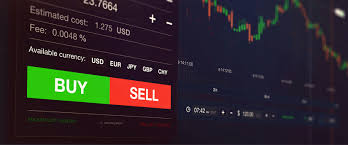
Forex trading, short for foreign exchange trading, refers to the global marketplace for buying and selling currencies. Known for its high liquidity and 24-hour availability, the forex market allows traders to exchange one currency for another, aiming to profit from currency fluctuations. Whether you are a novice or an experienced trader, understanding the intricacies of forex trading is crucial. In this article, we will explore the definition of forex trading, its workings, key concepts, and effective trading strategies. Additionally, we will highlight the forex trading definition Best Platforms for Trading that can facilitate your trading journey.
What is Forex Trading?
At its core, forex trading involves the buying and selling of currency pairs in the foreign exchange market. Unlike traditional stock markets that revolve around the buying and selling of shares in companies, forex trading focuses exclusively on currencies. Each transaction involves trading one currency against another, and the price is determined by the exchange rate between the two currencies.
The Mechanics of Forex Trading
The forex market operates through a network of banks, financial institutions, corporations, and individual traders. It is decentralized, meaning there is no central exchange or physical location where transactions take place. Instead, trading occurs over-the-counter (OTC), primarily through electronic trading platforms. The market is accessible 24 hours a day, five days a week, allowing traders to buy or sell currencies at any time.
Currency Pairs
In forex trading, currencies are always traded in pairs, such as EUR/USD (Euro/US Dollar) or GBP/JPY (British Pound/Japanese Yen). The first currency in the pair is known as the base currency, while the second is the quote currency. The exchange rate indicates how much of the quote currency is needed to purchase one unit of the base currency. For instance, if the EUR/USD exchange rate is 1.20, it means that 1 Euro can be exchanged for 1.20 US Dollars.
Types of Forex Orders
In forex trading, traders can place different types of orders to execute transactions. The most common types include:
- Market Order: This order is executed immediately at the current market price.
- Limit Order: This order is set to buy or sell a currency pair at a specified price or better.
- Stop-Loss Order: This order automatically closes a trade at a predetermined price to limit losses.
- Take-Profit Order: This order automatically closes a trade once the price reaches a specified level of profit.
Why Trade Forex?
Forex trading has gained immense popularity due to several factors:
High Liquidity
With an average daily trading volume exceeding $6 trillion, the forex market is the largest and most liquid financial market in the world. High liquidity ensures that traders can enter and exit positions quickly and at favorable prices.
Accessibility
Forex trading can be accessed through online trading platforms, requiring minimal capital to start. Many brokers offer leverage, allowing traders to control larger positions with a smaller investment. However, it’s important to approach leverage with caution, as it can magnify both profits and losses.
24/5 Market Operation
The forex market operates continuously over five trading days a week. This allows traders from different parts of the world to participate at their convenience. The market never sleeps, providing ample opportunities to trade.
Basic Concepts in Forex Trading
To navigate the forex market effectively, traders should be familiar with several key concepts:
Leverage

Leverage allows traders to control a larger amount of capital than they possess in their trading account. For example, with a 100:1 leverage ratio, a trader can control $100,000 in the market with just $1,000 in their account. While leverage can amplify profit potential, it also increases the risk of significant losses.
Margin
Margin refers to the amount of equity required to open and maintain a leveraged position. It is expressed as a percentage of the full position size. Understanding margin requirements is crucial for managing risk and preventing margin calls when account equity falls below a specified level.
Pips and Lots
A pip, short for “percentage in point,” is the smallest price movement in a currency pair. Most currency pairs are priced to four decimal places, with the last decimal representing one pip. A “lot” refers to the standardized quantity of a currency being traded. There are different lot sizes, including standard lots (100,000 units), mini lots (10,000 units), and micro lots (1,000 units).
Trading Strategies
Successful forex trading requires the implementation of effective strategies. Here are a few popular approaches:
Day Trading
Day trading involves making multiple trades within a single day, aiming to capitalize on short-term price movements. Day traders typically close all positions by the end of the trading day to avoid overnight risks.
Swing Trading
Swing trading focuses on capturing price movements over a longer time frame, typically days or weeks. Swing traders use technical analysis to identify potential reversal points and capitalize on market swings.
Scalping
Scalping is a high-frequency trading strategy that aims to make small profits from minor price changes. Scalpers often hold positions for only a few seconds to minutes, executing numerous trades throughout the day.
Risks Associated with Forex Trading
While forex trading offers numerous opportunities, it also comes with inherent risks:
Market Volatility
The forex market can experience sudden price fluctuations due to geopolitical events, economic data releases, or changes in monetary policy. Such volatility can result in substantial gains or losses within a short period.
Leverage Risks
While leverage can enhance profit potential, it also magnifies the risk of losses. Traders should use leverage cautiously and be aware of their risk tolerance.
Emotional Factors
Emotions play a significant role in trading decisions. Fear and greed can lead to impulsive actions that may negatively impact trading outcomes. Successful traders develop the discipline to stick to their trading plans.
Conclusion
Forex trading offers unique opportunities for individuals and institutions to participate in the global economy. By understanding the definition of forex trading, the mechanics, key concepts, and effective strategies, traders can enhance their chances of success in this dynamic market. Whether you are a beginner or looking to refine your trading skills, staying informed and adopting a disciplined approach is essential for navigating the complexities of forex trading.

